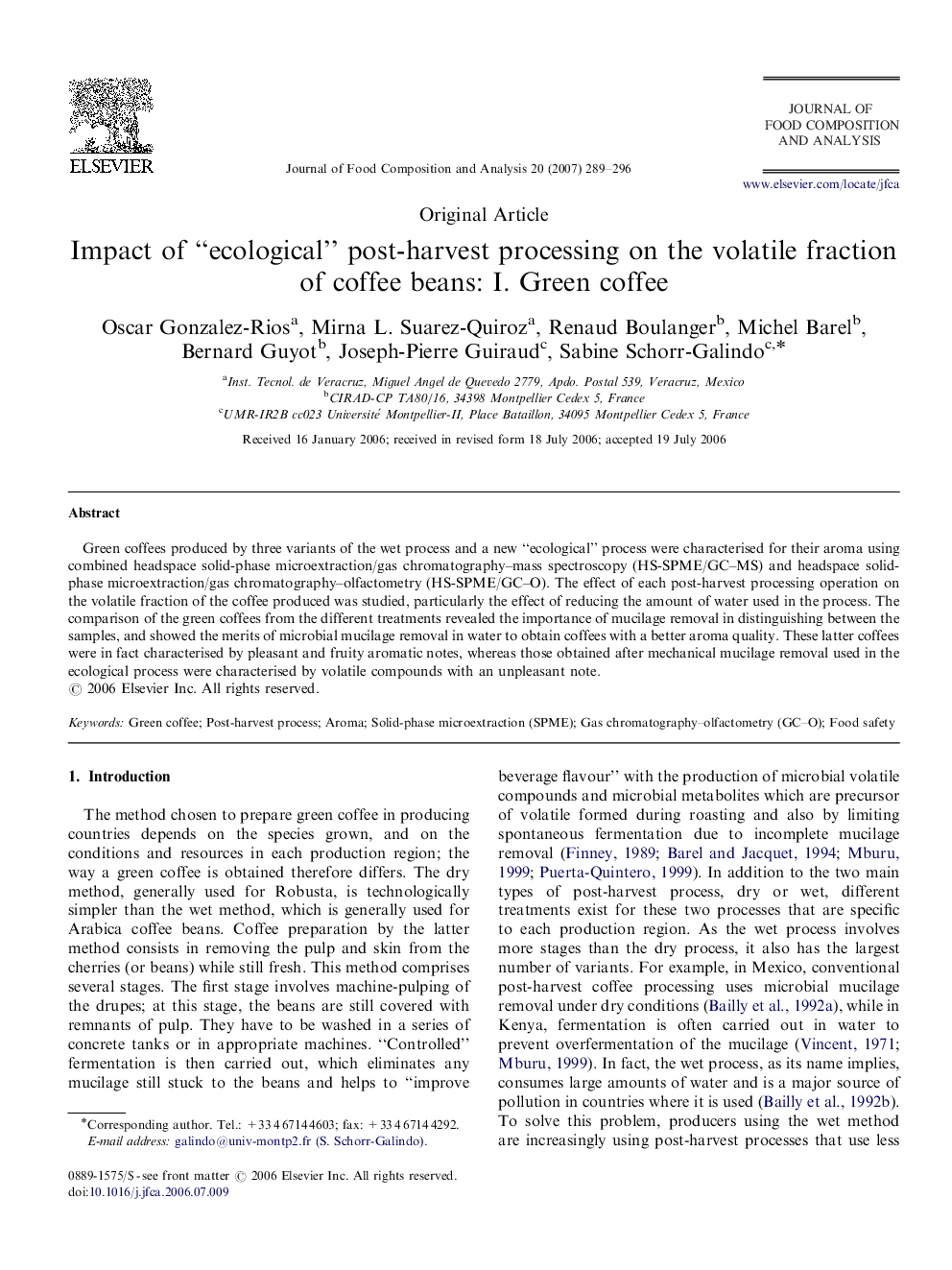| Article ID | Journal | Published Year | Pages | File Type |
|---|---|---|---|---|
| 1219210 | Journal of Food Composition and Analysis | 2007 | 8 Pages |
Green coffees produced by three variants of the wet process and a new “ecological” process were characterised for their aroma using combined headspace solid-phase microextraction/gas chromatography–mass spectroscopy (HS-SPME/GC–MS) and headspace solid-phase microextraction/gas chromatography–olfactometry (HS-SPME/GC–O). The effect of each post-harvest processing operation on the volatile fraction of the coffee produced was studied, particularly the effect of reducing the amount of water used in the process. The comparison of the green coffees from the different treatments revealed the importance of mucilage removal in distinguishing between the samples, and showed the merits of microbial mucilage removal in water to obtain coffees with a better aroma quality. These latter coffees were in fact characterised by pleasant and fruity aromatic notes, whereas those obtained after mechanical mucilage removal used in the ecological process were characterised by volatile compounds with an unpleasant note.
